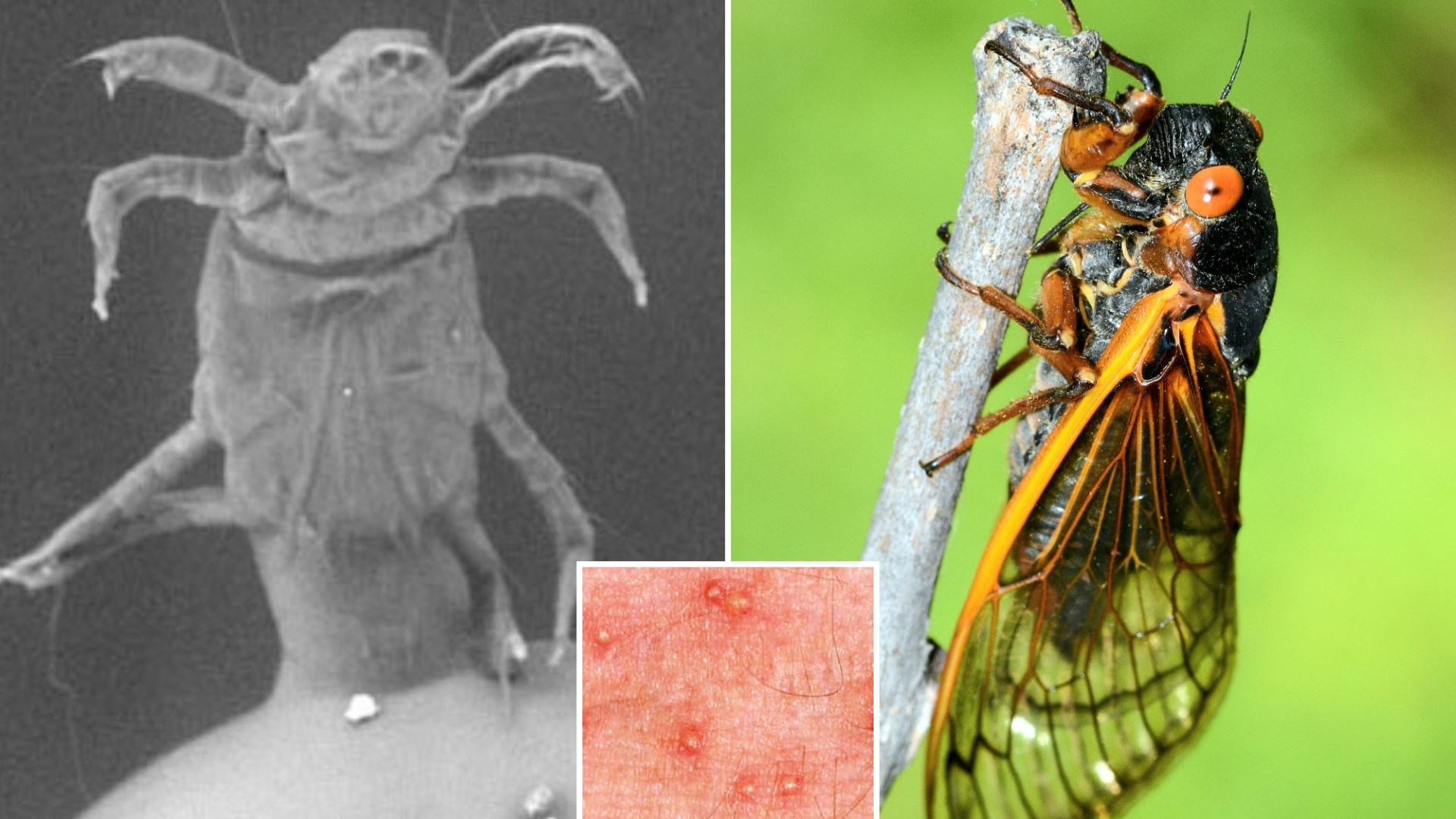A PLAGUE of tiny parasites that can travel with the wind has invaded parts of the US after a historic insect emergence.
This April, trillions of cicadas – an insect that can grow as large as a hummingbird – began their descent on the midwest and southeast of the US.

4

4
Although most of the creepy crawlies have died off, the eggs (larvae) they left behind are now feeding oak leaf itch mites, causing a surge in rashes across Illinois, in the midwest.
The mites, less than half a millimetre in length and nearly invisible to the human eye, make their presence painfully known to anyone unlucky enough to be bitten.
They are also so tiny, they can easily be carried by the wind.
“The mites do not take blood,” Jennifer Rydzewski, an ecologist at the Forest Preserve District of DuPage County, told Newsweek.
Instead, “they inject saliva into the top layer of skin and slurp up the liquid.”
The bites trigger an inflammatory response in the body, leading to small, itchy bumps or blisters surrounded by large red circles that resemble a rash.
Scratching these rashes can result in open wounds, which are susceptible to bacterial infections.
“We have seen a significant increase in our suburban locations compared to our downtown office and this is presumably because that’s where the cicadas were,” Dr Jordan Carqueville, from The Derm Institute of Chicago, told NBC Chicago.
The phenomenon of itch mite outbreaks in the US is not new.
In 2021, The Washington Post reported that some residents in the DC area were experiencing the mites after the cicadas left.
“We wake up at night just scratching,” one woman told the Post.
“It’s like we have splotches of white paint all over us now that we’re using the calamine [lotion].
“The sores are red and swollen, so it’s not pretty,” she added.
The latest cicada emergence seems to have brought them back.
“I think they’re back and I don’t know what to do about them,” one TikToker said in June, showing a raised bump on her arm surrounded by a rashy-looking red area.
“It lasts forever….they are awful.”

4

4
Investigations into the parasite found it had been feasting on eggs of oak gall midges, a type of fly that lays eggs on oak trees – hence the nickname oak tree mite.
When their populations surge and their food sources are exhausted, they turn to biting humans.
You should avoid being under oak trees, according to the Illinois Department of Public Health, which also recommends keeping windows closed because the mites are so small they can “pass through window screens.”
The Illinois Department of Public Health’s website says “DEET and other insect repellents may not work” on the oak itch mites.
Spot the dangerous bites from the harmless ones
Ever wondered if that annoying itch from a bug bite is something to worry about?
Let’s break it down so you can tell the harmless ones from the potentially dangerous bites and stings.
The harmless ones
- Mosquito Bites: These tiny, red, itchy bumps are the calling card of mosquitoes. They’re annoying but usually harmless. Sometimes, though, they can cause mild allergic reactions.
- Ant Bites: You’ll get small, red, itchy bumps from these little guys, and some might even give you a mild burning sensation.
- Bee and Wasp Stings: Ouch! These stings hurt and cause redness and swelling, but they’re generally not serious—just super painful.
What to Do:
- Clean the area with soap and water to keep it fresh and clean.
- Apply a cold compress to soothe that swelling.
- Reach for over-the-counter creams or antihistamines to kick that itch and pain to the curb.
The potentially dangerous ones
- Tick Bites: These can look like small red bumps but can sometimes bring Lyme disease to the party. Early signs include a circular rash, fever, headache, and feeling tired
- Spider Bites: While rare in the UK, some spider bites can be nasty Watch out for severe pain, muscle cramps, and trouble breathing
- Hornet Stings: These are more painful than bee or wasp stings and can cause a severe allergic reaction called anaphylaxis
When to get help:
- f you have trouble breathing, swelling of the face or mouth, or a fast heartbeat, get emergency help right away.
- If a tick bite gives you a rash or flu-like symptoms, see your doc ASAP.
- If a spider bite leads to severe pain, muscle cramps, or other worrying symptoms, it’s time to get medical advice.
Tips to stay safe
- Wear protective clothing when you’re out and about.
- Use insect repellent on any exposed skin.
- Keep food and drinks covered when you’re outside to avoid attracting bugs
Source: NHS website




